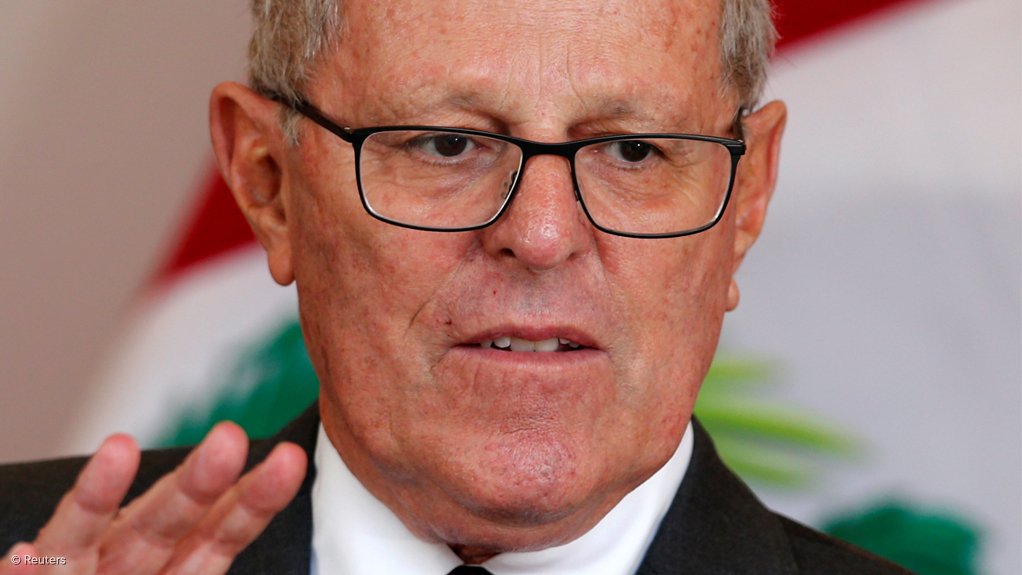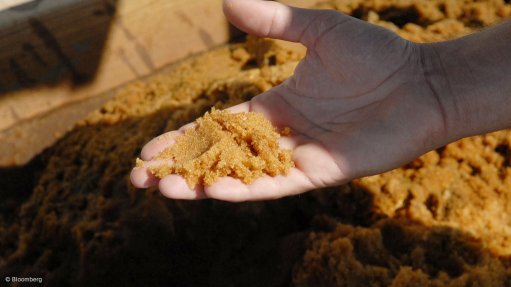Peruvian mining volumes continue to grow as new president takes helm
TORONTO (miningweekly.com) – The Peruvian mining industry is expected to spur renewed growth in the country as output grows, prices stabilise and revive, several speakers told a recent Peruvian-Canadian Chamber of Commerce economic outlook seminar.
The recent Peruvian election was so close that the winner Pedro Pablo Kuczynski, scraped past his rival Keiko Fujimori with just 39 000 votes. That was a margin of 0.2% in an election with 18-million votes cast.
Kuczynski is a centre-right technocrat whose election pledges steered clear of populism. He found Peru in good economic stead, despite the commodity price downturn affecting its export revenues and inward investment in the country’s mining sector.
DOWN THEN UP
The fall in both base and precious metals prices from their historic highs of a few years ago had been tough for Peru, which had benefited greatly from the China-driven resource supercycle from around 2002 to 2011/12.
“Peru’s mining strength is base metals, complemented by precious metals,” Scotiabank VP and head of international economics Pablo Bréard stated.
The country possessed 13% of the world’s copper reserves, as well as 22% silver, 9% lead, 7.6% zinc, 6% tin and 4% gold, according to Ernst and Young’s ‘Peru’s Mining & Metals Investment Guide 2015/2016’.
Mining accounted for 14% of Peru’s gross domestic product (GDP) during 2014, with mineral exports bringing $16-billion into state coffers that year.
Peruvian copper exports had continued to grow despite the pricing headwinds, Central Reserve Bank of Peru governor Julio Velarde noted.
The country produced 1.6-million tons copper in 2015 and was expected to produce 2.2-million tons in 2016, 2.5-million tons in 2017, and 2.7-million tons in 2018.
“The growth [in volumes] is just a straight line going upwards,” CIBC executive director and macro strategist for growth markets John Welch noted. “The cyclical nature is within prices and not the consumption side.”
Combined, Peru’s mining and hydrocarbons achieved 9.3% growth for 2015 and are expected to achieve 14.1% for 2016 and 8.6% in 2017.
Peru was producing an estimated 69 300 bbl/d of crude oil in 2014, according to the US Central Intelligence Agency’s ‘World Fact Book’.
“Peru is maximising its potential as a country similar to Chile,” Bréard said. “It has hydrocarbons and the maritime ports needed to tap the Asia-Pacific region.”
Because of their importance to Peru, stabilisation in oil, copper and gold prices – as well as the greater volumes exported – would be an important boon for the national economy.
“Because of the increase in mining we are expecting the biggest contribution to growth next year will be coming from exports,” Velarde said. “It’s going to help.”
The country’s overall GDP growth stood at 3.3% for 2015. “We believe that potential growth to be around 4% [for 2016], while the IMF [International Monetary Fund] believes it will be 3.5%,” he added.
Peru’s central bank also estimated 4.6% GDP growth for 2017.
Bréard also underlined the importance of mining as a driver for growth. “And together with the energy sector strength, it [mining] will find equilibrium sooner or later. Most probably this will occur by the end of next year, during H2 2017,” he said.
The higher prices and greater stability would also create virtuous cycle, increasing Peru’s appeal for natural resources investment, a similar effect that would become apparent in neighbouring countries.
The lower costs to build and operate mines in Peru compared with other nations gave the country an extra advantage, Velarde said.
OTHER ISSUES
Another problem for Peru, and Latin America as a whole, had been heavy leveraging and write-downs experienced by senior miners. This had knock-on effects in terms of their willingness to make inward investments or undertake operations development.
“But you’ll see companies adjusting quickly once we flush this leverage out of the system and I think we’ll see preparations for a return of growth in the sector,” Welch said.
It had been difficult to predict the timing of that. “But we see good prospects,” he added.
The strength of the US dollar had also been tricky for Peru and other Latin American nations. The greenback played an important role within domestic economies, particularly with relation for savings and investment.
The Peruvian sol had fallen by only 14% against the US dollar in recent years, Bréard noted. This compared with the Colombian, Mexican and Chilean currencies that had declined 38%, 33% and 30% respectively.
“It’s not that the Peruvian sol depreciated because Peru itself depreciated,” Bréard said. “It was because the US dollar was appreciating against the rest of the world.”
Peru’s softer decline reflected the diversification within its economy. The other nations had been more exposed because commodities exports had a greater weighting within their economies, particularly with relation to oil and gas.
Fortunately, the declines had a silver lining by making exports more competitive against the US dollar. “Exchange-rate depreciation has instilled a sense of competitiveness to countries that export, which is something we should keep in mind,” Bréard said.
At a macro level, he voiced concern about the high levels of liquidity entering the markets, particularly in relation to markets or Latin American nations that had been considered higher risk.
“Right now we’re enjoying a period of a rich appetite for risk, which is where we need to be somewhat cautious,” he said. “Risk aversion has reversed and now we have global liquidity abundance. But when there’s liquidity, there are opportunities to make mistakes.”
Investors should be cautious and consider on-the-ground development and tangible growth, with Bréard arguing Peru was a good choice because of its expected development patterns.
Beyond Peru, the stabilisation of global energy markets would be positive for other Latin American nations, most notably Venezuela, Mexico, Colombia and Brazil.
Brazil had also witnessed a decline in iron-ore prices and the substitution of Brazilian ore with Australian material in Chinese markets.
“So Brazil suffered on two fronts,” Bréard said. “But we expect that to reverse at some point in the not too distant future.”
Global political and economic events could also weigh on the recovery and commodities performance, with Bréard highlighting European stimulus decisions; the possibility of Brexit; and the US presidential elections as events with long-term implications.
Comments
Press Office
Announcements
What's On
Subscribe to improve your user experience...
Option 1 (equivalent of R125 a month):
Receive a weekly copy of Creamer Media's Engineering News & Mining Weekly magazine
(print copy for those in South Africa and e-magazine for those outside of South Africa)
Receive daily email newsletters
Access to full search results
Access archive of magazine back copies
Access to Projects in Progress
Access to ONE Research Report of your choice in PDF format
Option 2 (equivalent of R375 a month):
All benefits from Option 1
PLUS
Access to Creamer Media's Research Channel Africa for ALL Research Reports, in PDF format, on various industrial and mining sectors
including Electricity; Water; Energy Transition; Hydrogen; Roads, Rail and Ports; Coal; Gold; Platinum; Battery Metals; etc.
Already a subscriber?
Forgotten your password?
Receive weekly copy of Creamer Media's Engineering News & Mining Weekly magazine (print copy for those in South Africa and e-magazine for those outside of South Africa)
➕
Recieve daily email newsletters
➕
Access to full search results
➕
Access archive of magazine back copies
➕
Access to Projects in Progress
➕
Access to ONE Research Report of your choice in PDF format
RESEARCH CHANNEL AFRICA
R4500 (equivalent of R375 a month)
SUBSCRIBEAll benefits from Option 1
➕
Access to Creamer Media's Research Channel Africa for ALL Research Reports on various industrial and mining sectors, in PDF format, including on:
Electricity
➕
Water
➕
Energy Transition
➕
Hydrogen
➕
Roads, Rail and Ports
➕
Coal
➕
Gold
➕
Platinum
➕
Battery Metals
➕
etc.
Receive all benefits from Option 1 or Option 2 delivered to numerous people at your company
➕
Multiple User names and Passwords for simultaneous log-ins
➕
Intranet integration access to all in your organisation





















